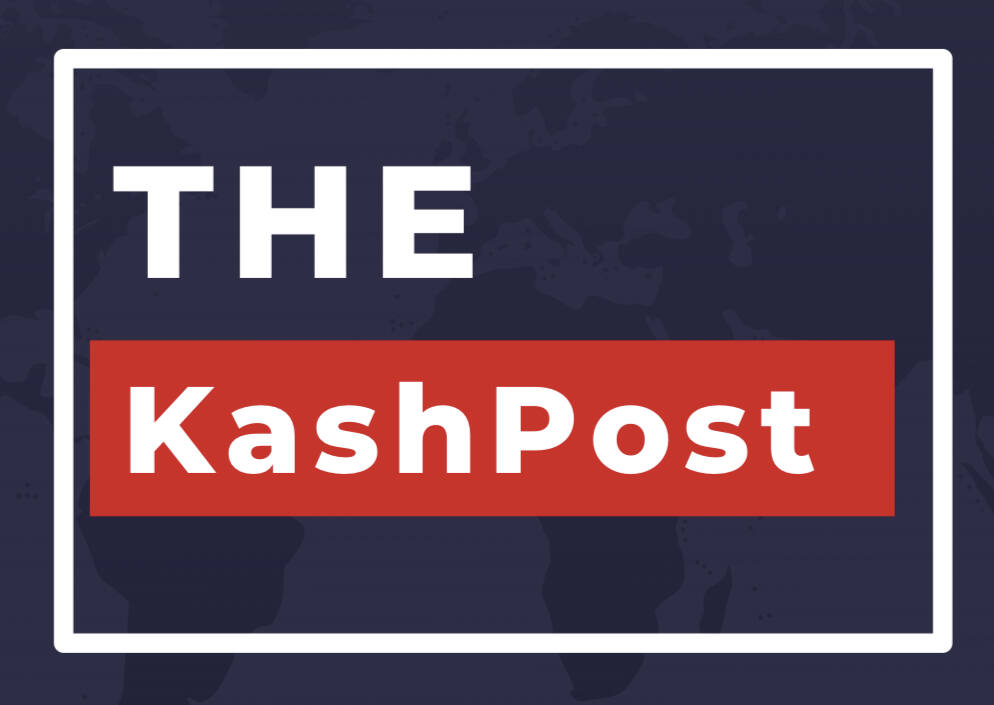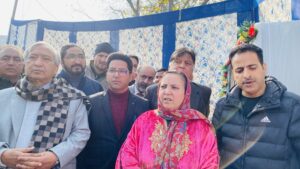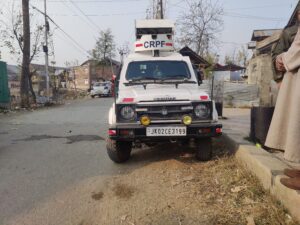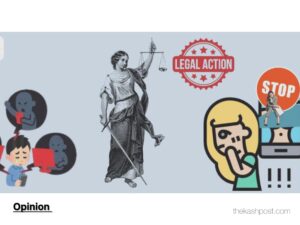Over ₹70 Crore Spent on Ads in J&K, 26% Directed to 5 Newspapers, RTI-based Reports Reveals
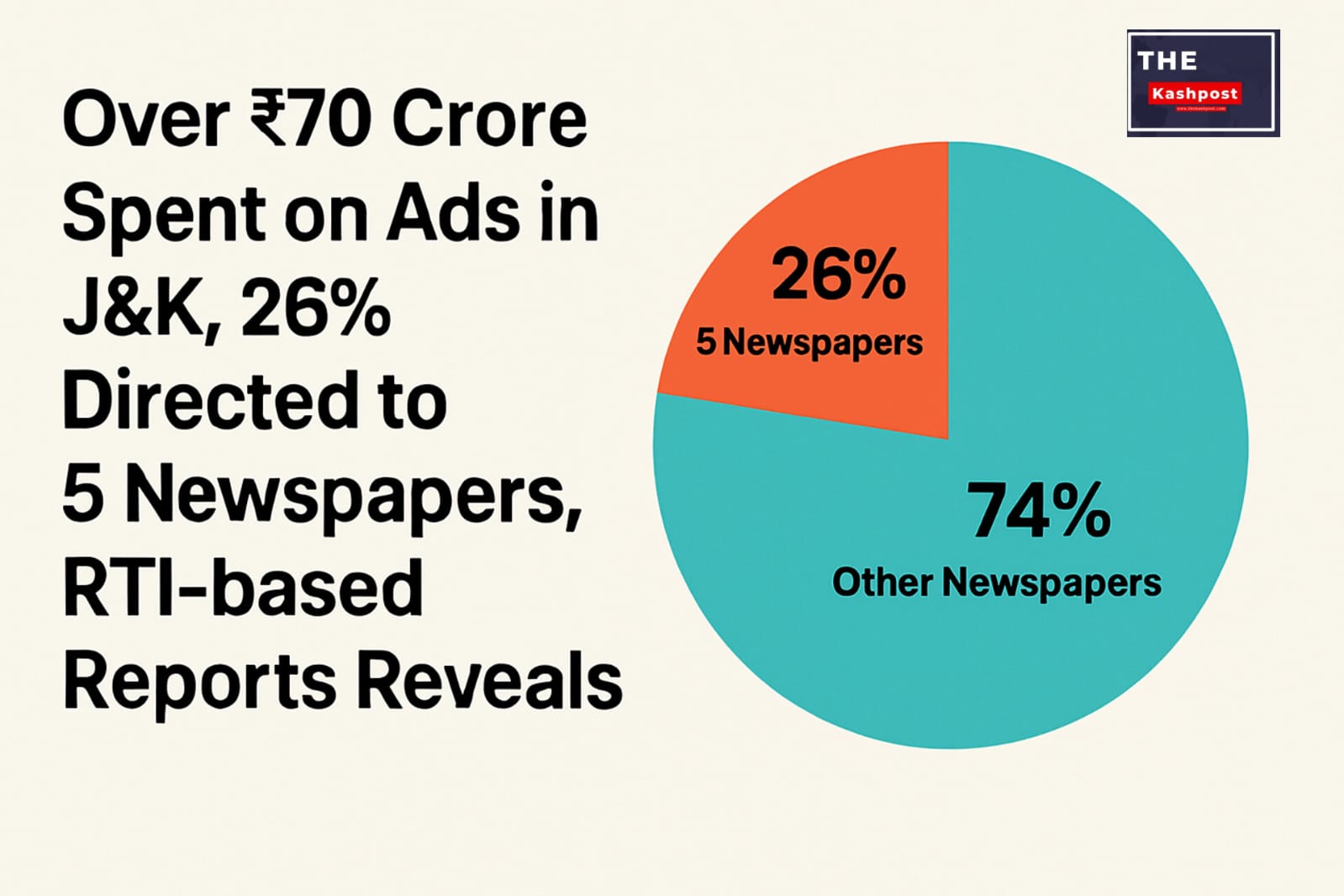
In the past two and a half years, the Jammu and Kashmir administration has spent over ₹70 crore on print advertisements, with more than 26 percent of that total going to just five publications. This revelation comes from an in-depth media investigation conducted by Newslaundry, based on RTI replies and a detailed review of public data.
The analysis spans from April 2022 to October 2024 and is based on two RTI replies received from the Department of Information and Public Relations (DIPR) in J&K. The first, filed by Mohammad Iqbal Wani, editor-in-chief of Iqbal E Kashmir, covers ad allocations from April 2023 to October 2024 to 147 newspapers. The second, by Srinagar resident Bilal Ahmad Mir, details ad spending for April 2022 to March 2023 across 140 publications.
The DIPR provided data in centimetres of ad space rather than monetary value. To estimate ad revenue, the investigation calculated the cost using DIPR’s lowest official rate, ₹75 per centimetre, applicable to black-and-white ads on inner pages. For context, the highest official rate for front-page colour ads can go up to ₹135 per cm.
Among the largest recipients, Rising Kashmir alone is estimated to have received ads worth ₹7.73 crore. It was followed by Aftab Daily at ₹3.7 crore, Srinagar News at ₹2.5 crore, Kashmir Images at ₹2.26 crore, and Kashmir Monitor at ₹2.1 crore. Together, these five newspapers took in over a quarter of the entire ₹70 crore ad spend, a concentration that has once again sparked debate over equitable media funding in the Union Territory.
At the same time, some publications witnessed sharp drops in ad allocations. Greater Kashmir, once one of the Valley’s most prominent English dailies, saw its government ad revenue decline by around 65 percent in the 18 months from April 2023, compared to the previous financial year. Brighter Kashmir also saw a steep fall in allocated space, from over 1.2 lakh centimetres to 34,000 cm.
To explore whether this funding translated into favorable editorial treatment, Newslaundry examined 18 editions of selected newspapers, focusing on key political events such as the G20 tourism meeting in Srinagar, anniversaries of the abrogation of Article 370, Supreme Court verdicts, the 2024 elections, and normal news days.
In the case of Rising Kashmir, LG Manoj Sinha appeared on 12 of the 18 front pages reviewed, and five times as the lead story. On May 22, 2023, during the G20 summit, the lead story quoted him saying the event was a “historic opportunity” for 13 million residents of Jammu and Kashmir. Other front-page reports echoed similar praise for the Centre’s development push, infrastructure improvements, and efforts to dismantle separatist networks.
The Prime Minister featured on at least seven front pages of Rising Kashmir, usually in the context of terrorism being defeated in the region or highlighting India’s global standing. On January 1, 2024, for example, the front page carried his New Year message declaring that the country was “brimming with self-confidence.” When not quoting Modi directly, the paper gave prominent space to his colleagues, such as Amit Shah’s statements on terrorism and President Droupadi Murmu’s message about peace in Kashmir.
Kashmir Images carried LG Manoj Sinha in 16 of the 18 editions reviewed, five times as the lead. On June 1, 2023, the paper ran a front-page report on the LG’s public grievance hearing, quoting him as saying the administration had been made more responsive. On August 5, the headline quoted him saying that the era of violence in Kashmir had ended. The G20 summit alone produced three separate front-page stories in the paper, all quoting or focusing on the LG.
PM Modi featured on at least four of Kashmir Images’ front pages, including one quoting Minister Jitendra Singh’s remarks about India surpassing developed economies. That said, this paper gave slightly more space to opposition voices than Rising Kashmir. During the 2024 Assembly elections, it carried statements by Congress President Mallikarjun Kharge and National Conference leader Omar Abdullah, who both promised to restore J&K’s statehood. After NC’s win, the lead story was PM Modi’s congratulatory message, not the party’s own reaction.
Kashmir Monitor, examined across 16 editions, also gave prominence to the same group of political figures. Its front pages carried Shah’s security meetings, Modi’s poll statements, and on December 12, 2023, the day after the Supreme Court verdict on Article 370, a headline in all caps read: “INTEGRATED FULL AND FINAL.” The paper’s coverage around the 2024 Lok Sabha elections also featured reports citing national TV channels predicting a third term for the BJP-led government.
The report notes that this pattern of generous ad allocation, often coinciding with favorable coverage. In 2021, several editors told a Press Council of India fact-finding committee that the government was using advertisements to suppress critical voices. The committee found that 17 publications in Kashmir and 26 in Jammu had their ads suspended, often without stated reasons.
One such instance involved Jammu-based Early Times, whose advertisements were stopped for three days after it reported that the Shrine Board and its website were non-functional. Its editor, Manish Gupta, told the committee that they faced repercussions immediately after the article was published.
In March this year, National Conference leader Omar Abdullah revisited the issue in the Assembly, urging the government to stop using advertising as a political tool. “A newspaper that merely publishes press notes and my photographs on the front page is not a newspaper, it’s a mouthpiece,” he remarked.
